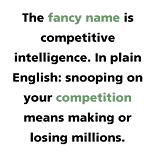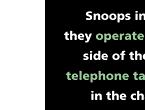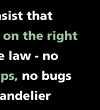Canadian Business
July 1, 1997
They snoop to conquer
BY HUGH MCBRIDE

When Carmen Leibel strode off the University of Regina campus in 1991 with a degree in business, she never imagined she would spend the next six years helping her employers snoop on their competition. But today she is doing just that-and what's more, looking forward to a long career in the same profession. Her current employer is TELUS Corp., an Edmonton telecommunications company that is facing a tidal wave of competition from rivals in long-distance, data communication, cellular phone and paging services. To help management plot its business strategy, TELUS has built its own in-house, competitive intelligence group. The mission of the CI team? To get the dirt on TELUS's adversaries by any legal means possible.
For Leibel, that means spending long days poring over competitors' product literature, scanning databases and chatting up executives at rival firms. In one case, she pulled together enough financial information to construct a complete profit-and-loss statement on a firm that thought its financial results were private. In another instance, she pieced together an extensive executive biography to see if a rival CEO's past behavior marked him as a risk-taker. "I like the challenge of finding information that people think is impossible to get," says Leibel, with obvious enthusiasm. "It's fun going out and finding the information, putting the pieces together, analyzing it and giving it to someone in the company who can act on it."
Even as you read this, a CI researcher such as Leibel could be probing your own darkest secrets. In fact, CI is emerging as one of the boom industries of the 1990s. During the past three years, membership in the 11-year-old Society of Competitive Intelligence Professionals (SCIP) has doubled to more than 5,000 members. The Alexandria, Va.-based society had no Canadian chapters before 1994; now it has eight.



